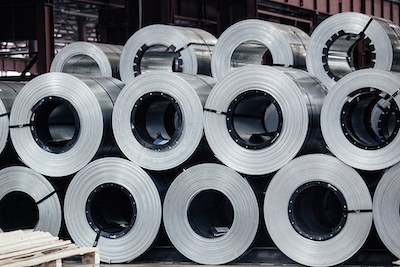When it comes to choosing the right metal for your next project, it’s crucial to understand the differences between the available options. Two popular metals that often come up in discussions are galvanized steel and aluminum. Each has its own unique set of properties, which makes it suitable for specific applications. In this article, we will delve into the key differences between galvanized steel and aluminum, examining their advantages, disadvantages, and common uses. This information will help you make an informed decision for your specific needs.
What is Galvanized Steel?
Galvanized steel is a type of steel coated with a protective layer of zinc, which helps prevent rusting and corrosion. The process of galvanizing involves dipping the steel into molten zinc, resulting in a chemical bond between the zinc and the steel. This bond forms a durable and protective outer layer known as the zinc-iron alloy. Galvanized steel is commonly used in a wide range of applications, including construction, automotive, and appliance industries.
What is Aluminum?
Aluminum is a lightweight, silvery-white metal that is the third most abundant element on Earth. It is known for its excellent corrosion resistance, high strength-to-weight ratio, and exceptional thermal and electrical conductivity. Aluminum is typically alloyed with other elements, such as magnesium, silicon, or copper, to improve its mechanical properties. This versatile metal is used in a wide variety of applications, including aerospace, transportation, packaging, and electronics industries.
Comparing the Properties
- Strength and Weight
Galvanized steel is stronger than aluminum, thanks to the strength of its base steel material. This strength makes it suitable for applications that require high load-bearing capacities, such as structural support in buildings, bridges, and heavy machinery. However, this strength comes at the cost of a higher weight, which can be a disadvantage in certain applications, such as automotive and aerospace industries, where reduced weight is crucial for fuel efficiency and performance.
Aluminum, on the other hand, has a lower strength compared to galvanized steel, but it has a higher strength-to-weight ratio. This means that aluminum can provide the same strength as steel while being considerably lighter. This property makes it an ideal choice for applications where weight reduction is a primary concern, such as in aircraft, vehicles, and portable equipment.
- Corrosion Resistance
Both galvanized steel and aluminum offer good corrosion resistance, but they achieve it through different means. The zinc coating on galvanized steel serves as a sacrificial layer that protects the steel from rust and corrosion. Over time, the zinc layer can wear away or become damaged, exposing the steel beneath and allowing corrosion to occur. However, this process takes a long time and can be delayed by choosing a thicker coating or by applying additional protective coatings, such as paint.
Aluminum, on the other hand, naturally forms a thin layer of aluminum oxide on its surface when exposed to air. This oxide layer acts as a barrier that protects the metal from further oxidation and corrosion. Aluminum’s inherent corrosion resistance makes it an excellent choice for applications in harsh environments, such as marine or coastal areas, where exposure to saltwater and humidity can accelerate the corrosion process.
- Thermal and Electrical Conductivity
Aluminum is renowned for its high thermal and electrical conductivity, making it a popular choice for applications that require effective heat dissipation or electrical conduction. For example, aluminum is commonly used as a heat sink material in electronic devices to dissipate heat generated by internal components. It is also used in power transmission lines and electrical wiring systems.
Galvanized steel, on the other hand, has relatively low thermal and electrical conductivity due to the insulating properties of the zinc coating. This makes it less suitable for applications that require efficient heat transfer or electrical conduction
- Workability
Aluminum is known for its excellent workability, making it easy to cut, form, and machine. It can be extruded into complex shapes and can be bent, rolled, or stamped without cracking or breaking. Additionally, aluminum can be easily joined using various techniques, such as welding, brazing, and adhesive bonding. This makes aluminum an attractive choice for applications that require intricate designs or complex fabrication.
Galvanized steel, on the other hand, has reduced workability compared to uncoated steel due to the zinc coating. The coating can sometimes crack or flake off during bending, cutting, or welding, exposing the steel to potential corrosion. However, this issue can be mitigated by using specialized tools and techniques designed for working with galvanized steel, or by applying additional protective coatings after fabrication.
- Cost
In general, aluminum is more expensive than galvanized steel due to its higher production costs and the increased demand for aluminum in various industries. However, the cost difference between the two materials may be offset by factors such as reduced maintenance, longer service life, and potential weight savings in certain applications. It is essential to consider the specific requirements and long-term costs of a project when determining the most cost-effective material.
- Sustainability and Recycling
Both aluminum and galvanized steel are environmentally friendly materials that can be recycled without losing their original properties. Recycling aluminum is particularly energy-efficient, as it requires only 5% of the energy needed to produce new aluminum from raw materials. This contributes to the metal’s overall sustainability and makes it an attractive choice for eco-conscious projects.
Galvanized steel can also be recycled, although the recycling process is slightly more complicated due to the presence of the zinc coating. However, both the steel and zinc can be reclaimed and reused, reducing the environmental impact of galvanized steel production.
Common Applications
Galvanized Steel:
- Construction: structural support, roofing, and siding
- Automotive: body panels, chassis, and suspension components
- Appliances: washing machines, dryers, and refrigerators
- Fencing and outdoor structures: chain-link fences, guardrails, and street signs
Aluminum:
- Aerospace: airframes, components, and fuselage structures
- Transportation: automobile and truck components, fuel tanks, and wheels
- Packaging: cans, foils, and food containers
- Electronics: heat sinks, enclosures, and printed circuit boards
In conclusion, both galvanized steel and aluminum have unique properties that make them suitable for different applications. Galvanized steel offers superior strength, making it ideal for heavy-duty, load-bearing applications. Its zinc coating provides good corrosion resistance, although it may require additional protective measures in harsh environments.
Aluminum, on the other hand, offers a high strength-to-weight ratio, making it ideal for applications where weight reduction is crucial. Its natural corrosion resistance, excellent workability, and thermal and electrical conductivity make it a versatile material suitable for a wide range of industries.
Ultimately, the choice between galvanized steel and aluminum will depend on the specific requirements of your project. By carefully considering factors such as strength, weight, corrosion resistance, workability, cost, and sustainability, you can make an informed decision that best suits your needs.










